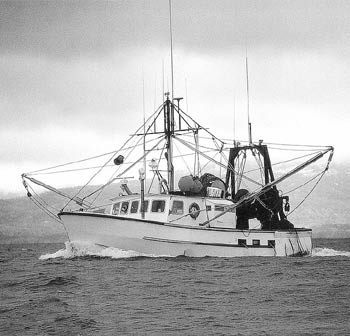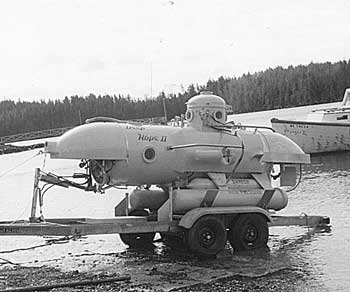A Recipe For Disaster
by Laurie Schreiber
|
|
A new plan to pay groundfishermen to permanently retire their permits would end up consolidating the industry in the hands of a few and would put Maine’s small-boat fleet – and an aspect of their way of life – out of business forever.
That was the consensus of fishermen and others at a meeting last month on the National Marine Fisheries Service’s (NMFS) new Northeast Multispecies Fishery Fishing Capacity Reduction Program. NMFS fishery administrator Jack Terrill explained the buyback program would be voluntary.
But fishermen said the idea itself is wrong-headed. They said it would do nothing to help restore depleted stocks and instead would prevent Maine’s fishermen from ever being able to groundfish again once stocks do rebound. They said that, if the idea is to reduce fishing effort, regulators should go after the large-capacity vessels that congregate elsewhere in New England.
The program follows two vessel buyback initiatives. A pilot program occurred in 1995, making $2 million available. Applying for the buyback were 114 owners, with vessels worth over $52 million and representing 31 percent of the active groundfish capacity. Grants were made to 11 owners. The program was expanded from 1996 to 1998, with $23 million awarded to remove an additional 68 vessels.
The total of 79 vessels removed accounted for 19 percent of the groundfish catch. However, a subsequent study showed that 62 additional vessels became active since the
|

|
|
buyback; no steps had been taken to prevent previously inactive vessels from engaging in fishing. Fishing capacity was replaced by as much as two-thirds.
The new program is intended to permanently restrict the ability to fish. It would provide $10 million in emergency disaster assistance funds to pay fishermen to permanently retire their permits. The program, Terrill stressed, was not requested by NMFS but was imposed on them by Congress. There are about 1,700 permits allocated in the Northeast.
Meetings have been held throughout New England to get ideas on how to implement the plan, which is intended to target latent permits, or those which are maintained but not used. Only about a third of multispecies
|
limited access days at sea are being used, according to NMFS. If the unused days were to be fished, it could create problems for rebuilding efforts. The plan is the latest in a series intended to address overfishing since the Northeast multispecies fishery was declared a commercial fishery failure in 1986, by which time a number of factors – including significant gear and other technological advances, rapid capitalization, and unlimited permitting – had caused stocks to decline to record low levels. The regulated species addressed by the plan are cod, haddock, pollock, yellowtail flounder, winter flounder, gray sole, American plaice, windowpane flounder, white hake and redfish.
continue
|
|
The Mysterious Short Life Of The Traveler III
by Mike Crowe
|
|
Just ten years after being launched in Hong Kong in 1968, the 68’ teak ketch Traveler III sank off Jonesport, Maine, a few minutes before midnight on June 12, 1978. The events that followed generated more curiosity than the sinking and are responsible for etching the tale into the memories of some coastal residents. The John Alden designed yacht was built for charter captain Arthur Crimmins of Miami and Freeport, Bahama. It had been chartered by the rich and famous, including George Harrison, Lawrence Rockefeller and Nixon-era spy E. Howard Hunt. In the mid 1970s Crimmins sold the exceptional and highly regarded boat to an unidentified wealthy Saudi Arabian for $325,000.
The story that unfolded after departing Jonesport has all the elements of a Hollywood script. Mystery, murder, drugs, big money, stars, and smugglers were all part of the tale. The coast of Maine in the 1970s, had become, as it had been for rum runners during prohibition and smugglers back to British colonial rule, a good place to hide and discharge contraband. In the 1970s contraband was often marijuana and hashish.
continue
|
 The two man submarine Deep Hope II built specifically to dive to and raise the Traveler III by Hope Industries of Pennsylvania in 1979. Difficulties in the project and operation of the sub led to it not being used in the effort. It was successfully employed in another deep water salvage project downeast. About 25' long with sitting headroom, operators were in a prone position. It was tested to 300' and was designed to attach and deploy lift bags on the sunken boat. The two man submarine Deep Hope II built specifically to dive to and raise the Traveler III by Hope Industries of Pennsylvania in 1979. Difficulties in the project and operation of the sub led to it not being used in the effort. It was successfully employed in another deep water salvage project downeast. About 25' long with sitting headroom, operators were in a prone position. It was tested to 300' and was designed to attach and deploy lift bags on the sunken boat. |
|
|
  
|
|

